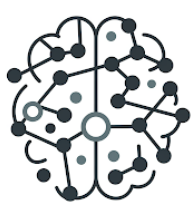The dangers of AI-mediated cognitive offloading

A recent paper weighs in on the question of AI use affecting critical thinking. It focuses on cognitive offloading, adaptive behaviour that humans have been doing at least since inventing writing, but which is a double-edged sword. As the author Michael Gerlich puts it:
Cognitive offloading [...] involves using external tools to reduce the cognitive load on an individual’s working memory. While this can free up cognitive resources, it may also lead to a decline in cognitive engagement and skill development. The pervasive availability of AI tools, which offer quick solutions and ready-made information, can discourage users from engaging in the cognitive processes essential for critical thinking.
To examine if AI use impacts critical thinking (and whether any effect is mediated by cognitive offloading), the author devised a questionnaire that measured among other things frequency of AI use and critical thinking. The latter was done by taking some items from the Halpern Critical Thinking Assessment and from the Terenzini self-report measure. Besides these quantitative measures, there were also interviews with a subset of participants, to discuss AI use and critical thinking.
Both the quantitative and the qualitative data suggest that increased AI use corresponds with lower critical thinking skills. Crucially, the results of the study show that more AI use is associated with more cognitive offloading and that this cognitive offloading is associated with less critical thinking. Given the fact that AI is increasingly used in classrooms, the author offers:
While AI tools offer personalised learning and efficient information retrieval, educators must be cautious of the potential drawbacks. The literature suggests that AI can enhance learning outcomes when used appropriately. However, our findings highlight the necessity of balancing AI usage with activities that promote critical thinking and cognitive engagement. [...] . Our results support this [active learning] approach, indicating that reducing cognitive offloading through active engagement can mitigate the negative impact of AI tools on critical thinking. Educational interventions should therefore integrate critical thinking exercises and foster environments where students are encouraged to engage deeply with content rather than passively relying on AI tools.
It's tempting to connect these findings to the Microsoft study that was recently discussed on this blog. There, critical thinking when using AI was mainly happening for knowledge workers who had the right expertise and inclination to critically assess AI output. Perhaps they were offloading less than those who felt the task was too difficult, unimportant or irrelevant to be engaging.

In education, these findings are cautionary. As Gerlich suggests, engaging in critical thinking activities instead of delegating work to AI can be key to develop the proper thinking skills. I suspect this can range anywhere from outright removal of AI from the learning environment to offering complementary activities that do not depend on the technology. For example, AI-supported activities (in or outside the classroom) could be followed by classroom activities that require active discussion, reflection or justification of choices.
What will not work is just throwing the technology at students and having them figure it out. Learners will not regulate their cognitive offloading well, because for them it's hard to gauge what the appropriate level of cognitive engagement is in the first place. Educational design is exactly about offering the challenges that require students to train their thinking.
References
Gerlich, M. (2025). AI Tools in Society: Impacts on Cognitive Offloading and the Future of Critical Thinking. Societies, 15(1), 6.
Halpern, D. F. (2010). The Halpern critical thinking assessment: Manual. Modling, Austria: Schuhfried GmbH.
Terenzini, P. T., Springer, L., Pascarella, E. T., & Nora, A. (1995). Influences affecting the development of students' critical thinking skills. Research in higher education, 36(1), 23-39.

Member discussion